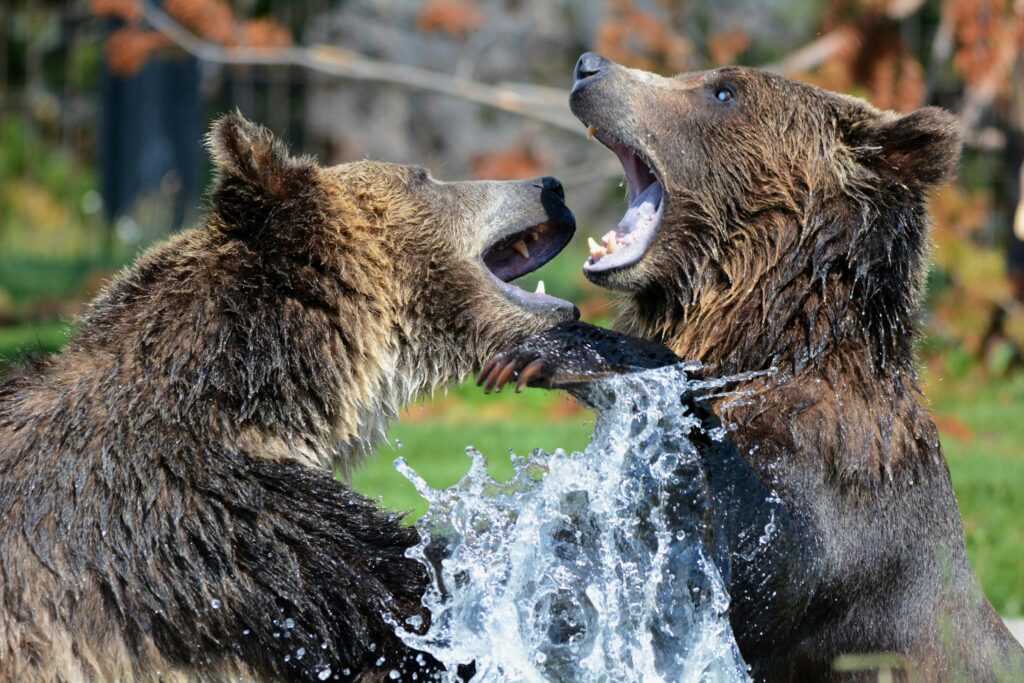Romania

Wild Fight
Romania feels like a place where the wild never really left. In its ancient forests and misty mountains, you don’t just walk through nature — you walk through history. Through shadows. Through silence. This is a land where bears still roam like they always have, where wolves follow trails invisible to us, and where the rustle in the trees isn’t just wind — it might be something watching. Romania’s wildlife is not tamed. It’s not curated. It’s real, raw, and waiting.
A Forgotten Wildness That Endured
While much of Europe has pushed its wildlife to the margins, Romania kept it close — sometimes by accident, sometimes by tradition. The Carpathian Mountains stretch like a backbone across the country, holding one of the richest and most intact forest ecosystems in Europe. Here, apex predators never disappeared. Brown bears still forage at dusk. Wolves still howl. Lynx still move like ghosts. And in the lowlands, the Danube Delta explodes with birdlife, fish, and marsh creatures that live without fences.
Where Wild Europe Still Breathes
Encounters That Are Still Wild
Romania’s wildlife doesn’t come with a viewing platform. You walk quietly. You listen. A snap in the woods might be a roe deer. A low grunt might be a bear. In the Delta, you drift silently in a boat as pelicans lift into the air like forgotten spirits. These aren’t curated experiences — they’re real, unscripted, and sometimes humbling.
Species That Define Romania’s Wild Heart
What Makes It Wild — and What Threatens It
Romania’s biodiversity is staggering — and fragile. The traditional rural lifestyle has long protected wild places. But modern pressures are growing fast:
Final Reflections
Romania isn’t polished — and that’s what makes it powerful. The wild here is still messy. Still unpredictable. Still real. You don’t come for perfect sightings. You come for the feeling: of walking where bears walk, of hearing the woods hold their breath, of knowing that here — in the heart of Europe — nature still has a place that belongs only to it. Romania is the reminder that wildness, when protected, doesn’t need to be reintroduced. It was always here. Waiting.
A Forgotten Wildness That Endured
While much of Europe has pushed its wildlife to the margins, Romania kept it close — sometimes by accident, sometimes by tradition. The Carpathian Mountains stretch like a backbone across the country, holding one of the richest and most intact forest ecosystems in Europe. Here, apex predators never disappeared. Brown bears still forage at dusk. Wolves still howl. Lynx still move like ghosts. And in the lowlands, the Danube Delta explodes with birdlife, fish, and marsh creatures that live without fences.
Where Wild Europe Still Breathes
- Carpathian Mountains: Home to over 6,000 brown bears — the highest population in Europe — as well as wolves, lynx, red deer, wild boar, and forest-dwelling owls. This is the land of legends, but also of tracks, claw marks, and distant howls.
- Piatra Craiului & Retezat National Parks: Prime habitats for lynx and bears. Steep, rocky, and forested — you may never see the animals, but you’ll feel them.
- Danube Delta: A labyrinth of reeds, channels, and floating islands. Europe’s wildest wetland, home to pelicans, egrets, otters, wildcats, and over 300 bird species.
- Transylvanian Hills: Rolling meadows, mixed woods, and remote villages where people live close to nature. Great for red deer, badgers, martens, and traditional hay meadows full of butterflies.
- Rodna Mountains: High alpine wilderness — wolves roam these peaks, and golden eagles soar above pastures that haven’t changed in centuries.
Encounters That Are Still Wild
Romania’s wildlife doesn’t come with a viewing platform. You walk quietly. You listen. A snap in the woods might be a roe deer. A low grunt might be a bear. In the Delta, you drift silently in a boat as pelicans lift into the air like forgotten spirits. These aren’t curated experiences — they’re real, unscripted, and sometimes humbling.
Species That Define Romania’s Wild Heart
- Brown Bear: Romania is the bear capital of Europe. They thrive here, especially in the Carpathians — often spotted at forest edges at dusk or dawn.
- Grey Wolf: Elusive, intelligent, and essential — they roam in family packs through Romania’s wilder ranges.
- Eurasian Lynx: Solitary and silent — rare to see, but present in healthy numbers in remote woodlands.
- Dalmatian Pelican: A massive and graceful bird of the Danube Delta — wings wide, eyes ancient.
- European Wildcat: Smaller than a lynx, but just as untamed — often seen in southern forest margins and remote valleys.
What Makes It Wild — and What Threatens It
Romania’s biodiversity is staggering — and fragile. The traditional rural lifestyle has long protected wild places. But modern pressures are growing fast:
- Illegal logging: Ancient forests — some of Europe’s last — are still being lost to corruption and commercial cutting.
- Development and roads: Fragmentation threatens species that need space — like bears and wolves.
- Hunting & human conflict: While large predators are protected, conflicts still occur — especially near farms and rural settlements.
- Tourism: Rapid growth in ecotourism is both a hope and a risk — it must be handled with care, or it will push wildlife away.
Final Reflections
Romania isn’t polished — and that’s what makes it powerful. The wild here is still messy. Still unpredictable. Still real. You don’t come for perfect sightings. You come for the feeling: of walking where bears walk, of hearing the woods hold their breath, of knowing that here — in the heart of Europe — nature still has a place that belongs only to it. Romania is the reminder that wildness, when protected, doesn’t need to be reintroduced. It was always here. Waiting.
